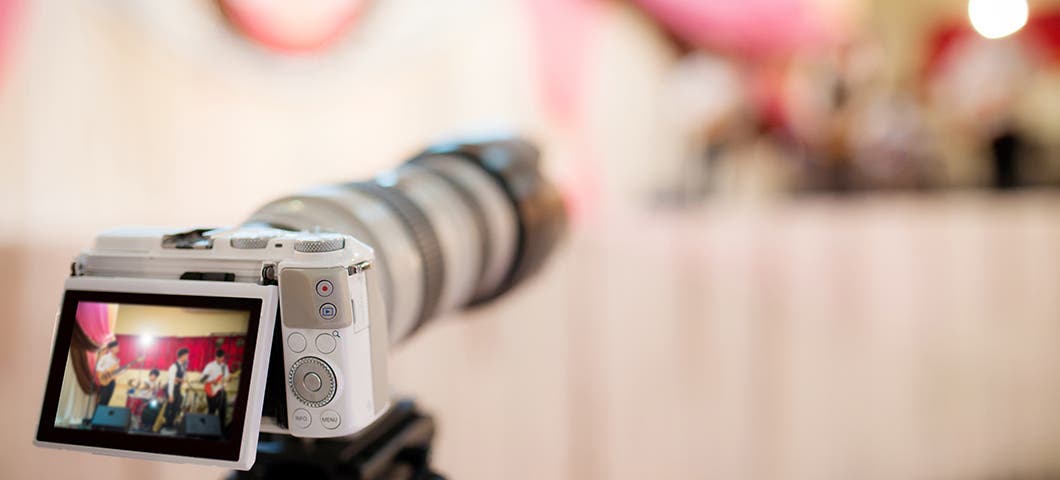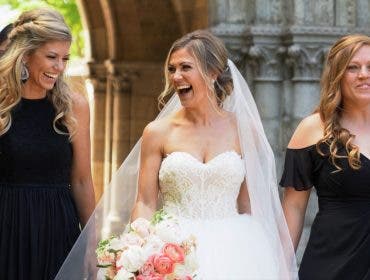With dozens of gadgets and handfuls of cords, it’s easy to feel unorganized as a wedding filmmaker. You’re faced with all sorts of stressors and situations — from client management to audio testing and an ever-changing white balance to gimbal stabilization (not to mention that pesky lens cap on the loose). But rest assured, as a recovering “master of mess,” I’ve cultivated a system that can keep even the most scatter-brained wedding filmmaker sane and organized.
Here is my sequence of 7 tried-and-true tips:
1. Assign a designated place for everything
Sure, this mirrors the organization motto moms love to impress upon their kids (“a place for everything and everything in its place”), but I have to be honest — it really works. If you keep your memory cards in one specific holder, your chargers, batteries, lens cleaners and personal items in designated pockets (and, of course, you actually stick with the plan), your future self will thank you.
This tip also extends beyond your backpack; create designated gear spots in your home so you can quickly pack up without forgetting an essential item. That said, I still reference my printed wedding day checklist every time.
2. Wear pockets
A simple wardrobe change will do wonders to your sanity come wedding day. I filmed my first wedding in pocket-less black pants and felt completely frazzled with my lens caps and batteries strewn about. After learning my lesson and investing in a sleek pair of pants with deep pockets, I was able to keep my lens caps, printed schedule, and even extra batteries on me at all times — which is particularly important during the ceremony when I need to switch out the batteries on my Sony A7SII.
3. Prepare your shot list
As a wedding filmmaker — particularly a solo videographer — it’s easy to get caught up in the chaos and forget some key frames. That’s why I spend time before the big day thinking through all the angles and frames I want; I also print this out and keep it on me at all times to aid my subpar memory. Thankfully, the bulk of the shots remain the same from one wedding to the next, but I like to conceptualize some different ideas like an evening drone flyover or filming with a prism to expand my creativity and client offerings.
4. Buy attachable gadgets and cases
When I first heard about lens cap leashes, it nearly saved my life (or, at least my sanity!). Instead of counting on my sidetracked brain to keep track of my caps during rushed first looks and ceremonies, I can keep them tethered to the camera or my wrists at all times. Now, if you’re shooting video on anything but a tripod, I’d recommend keeping the lens caps on yourself versus the camera; otherwise it can add unnecessary shake or noises to your footage.
If you love the idea of tethering gear to avoid misplacing it, try an attachable memory card case. With my run-and-gun filming style, it’s easy for my gear to get jumbled, disorganized and misplaced, but having my memory cards actually attach to the inside of my backpack is a blessing. I can rest assured I’ll never lose track of my most valuable asset as a filmmaker — my footage!
5. Sync your cameras and gadgets
I’ll admit, I don’t always abide by this rule, but my post-production is much, much smoother when I sync all of my devices to the same time and date pre-wedding. This helps me quickly and effectively organize my footage from prep to ceremony and speeches to dances; then, I can efficiently sort my footage into folders for editing come post production, which leads me to my next tip…
6. Sort your footage into folders
Editing is much simpler if you know exactly where to find the clip you’re looking for, so it’s important that you place your footage into specific folders based on the part of the day (e.g., bride prep, first look) before importing into Final Cut or Premiere. This is one of the first things I do when I get home from a wedding, and it’s one part of my post-production process I refuse to skip.
7. Create your own process and stick to it
From pre-wedding to post-production, you’ll feel significantly more organized if you have a go-to process you stick with every time. This includes checking your batteries and packing your bags, your routine for the morning of a wedding, following your schedule and shot list in the moment and staying consistent with uploading footage in post. I realize a “process” may sound as easy as it gets, but I’ve learned time and again, it’s also the easiest to forget, especially if your jumping from project to project. But, like all things, practice makes perfect and the more you stick with your routine, the more organized you’ll be.
I’ll be honest, I got into the filmmaking business for the creativity and flair — not the structure and organization. But, the more I film the more I realize I need to stay on top of my game (and gear!) to avoid unnecessary and expensive mistakes.






